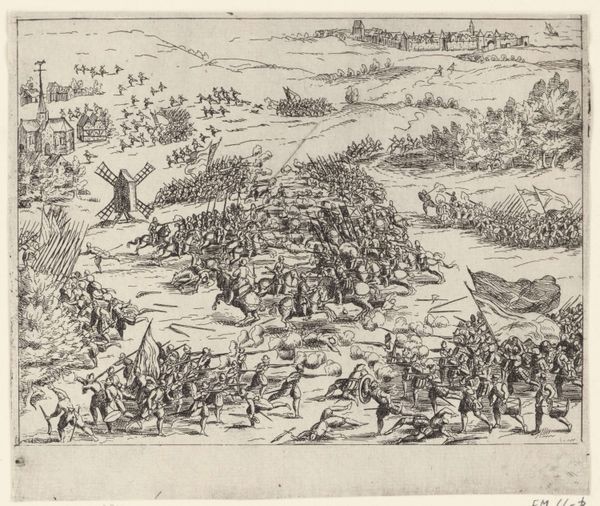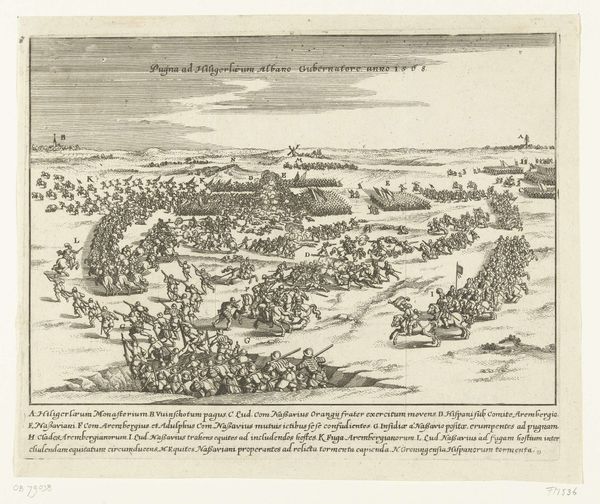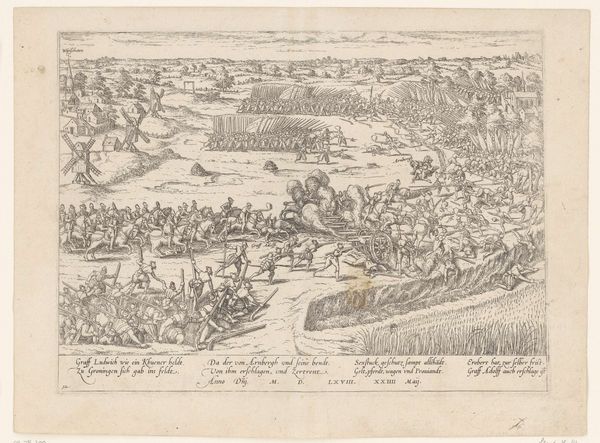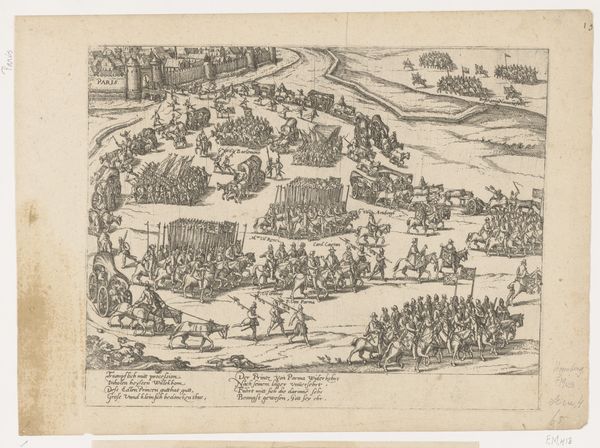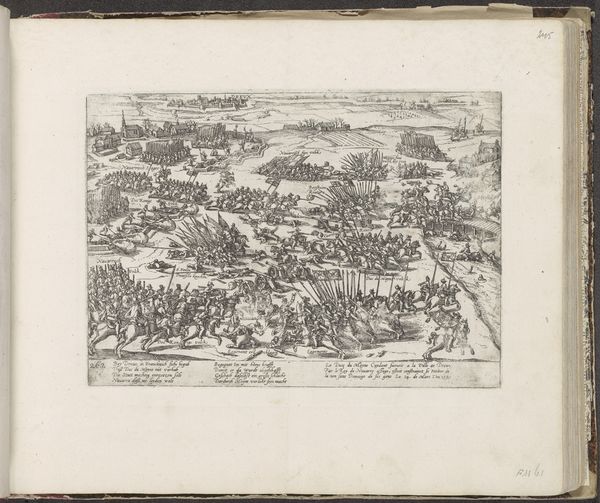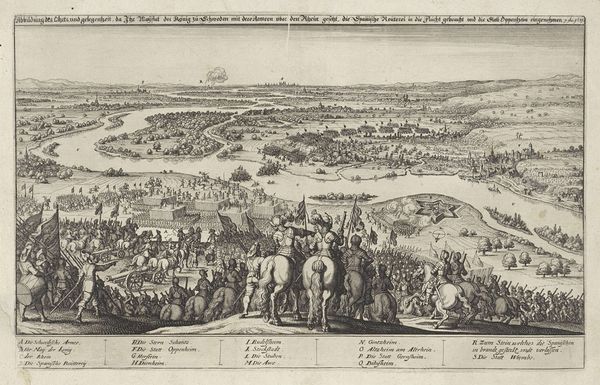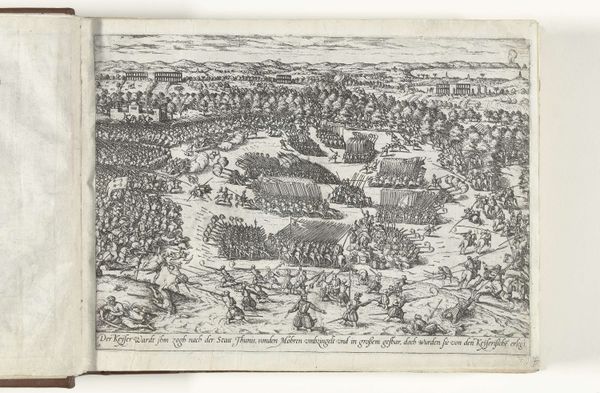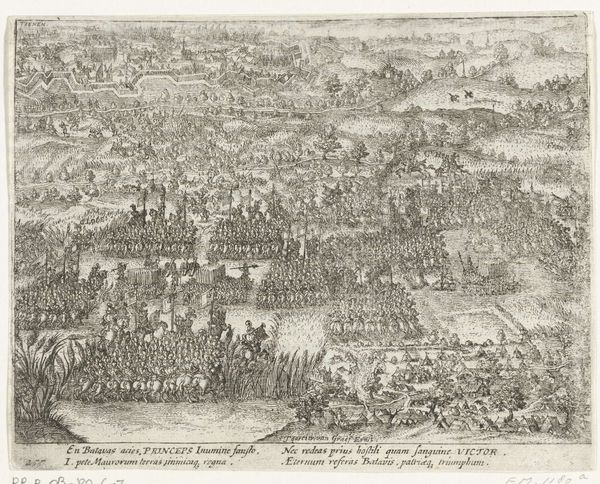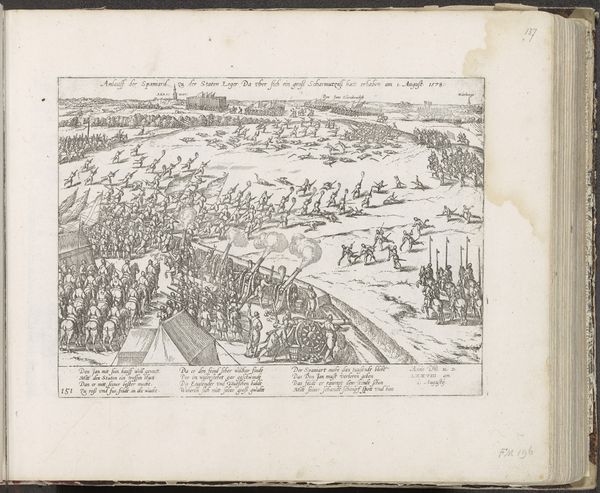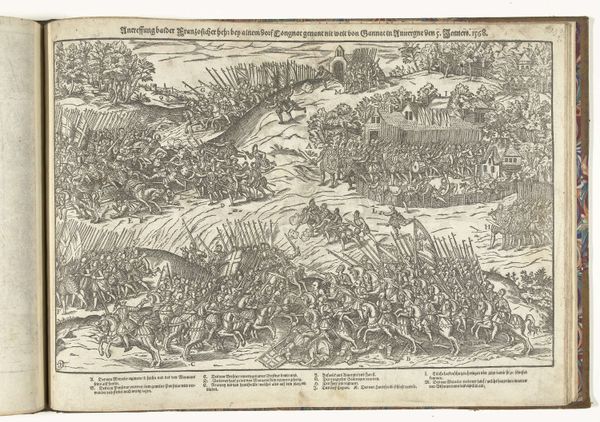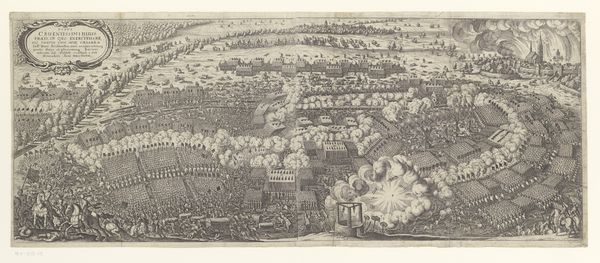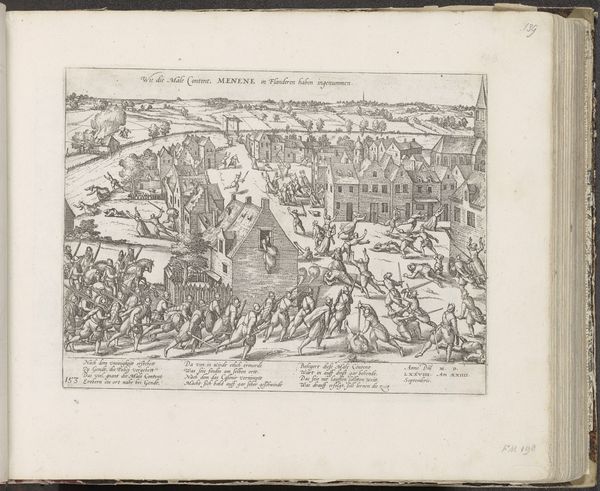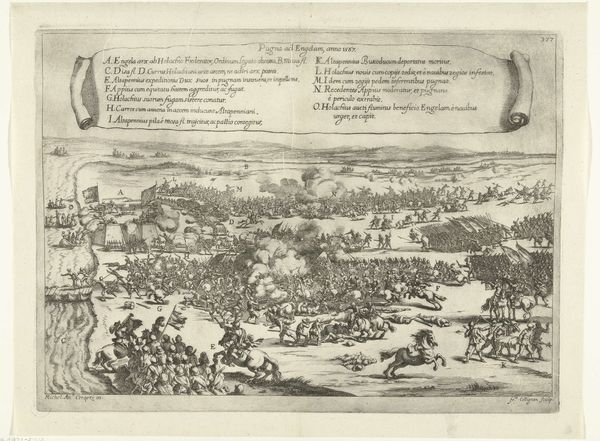
graphic-art, print, etching, engraving
#
graphic-art
#
narrative-art
#
pen drawing
# print
#
etching
#
landscape
#
11_renaissance
#
history-painting
#
engraving
Dimensions: height 220 mm, width 282 mm
Copyright: Rijks Museum: Open Domain
Curator: This is an engraving by Frans Hogenberg, titled "The Battle of Ivry," created between 1590 and 1592. The Rijksmuseum is its current home. Editor: My first impression is one of immense chaos and surprisingly detailed violence. It feels like looking down on a storm of tiny, frantic figures. Curator: Indeed. Hogenberg's image depicts a pivotal moment during the French Wars of Religion. Think about the period, with the tensions between Catholics and Huguenots reaching a fever pitch. This battle solidified Henry IV’s claim to the French throne, marking a shift in the political landscape of Europe. Editor: You see those clusters of soldiers, those dense thickets of spears – they immediately bring to mind a symbolic forest of conflict. All those identical figures; their collective power versus individual fates... Were these kinds of images common propaganda? Curator: Absolutely. Prints like these served as a visual record, and often as propaganda, distributed widely to shape public perception of these events. Consider the role of the printing press at the time. These prints helped form and solidify Protestant collective identity but more largely spread awareness of conflict across Europe. Editor: And what of the imagery itself? Look how tiny Dreux is in the background, emphasizing the scale of conflict engulfing the entire landscape. Is the town itself a symbol, something worth fighting for, or merely the place where it happened? Curator: Likely both. Towns represented the socio-political-religious leanings that influenced larger power dynamics. You have the narrative of the battle itself interwoven with its meaning – religious power, territorial gains, and the changing fortunes of political players. The battle itself is part of a broader narrative concerning control of this specific space. Editor: Looking at it again, I notice all the individual bodies scattered across the field. A gruesome visual reminder of the human cost inherent to all symbolic struggles. All that potential unrealized… it makes you think, what *were* they fighting for? Curator: A powerful reminder of how the individual experience is often lost in the grand sweep of historical narratives. These sorts of engravings become incredibly valuable documents, in how they are shaped by the very forces that produce and motivate historical change. Editor: Well, it has certainly given me pause. Curator: Indeed. Visual rhetoric provides a glimpse into a society’s values, fears, and aspirations, prompting us to contemplate the cyclical nature of conflict and its lasting impact on collective memory.
Comments
No comments
Be the first to comment and join the conversation on the ultimate creative platform.
